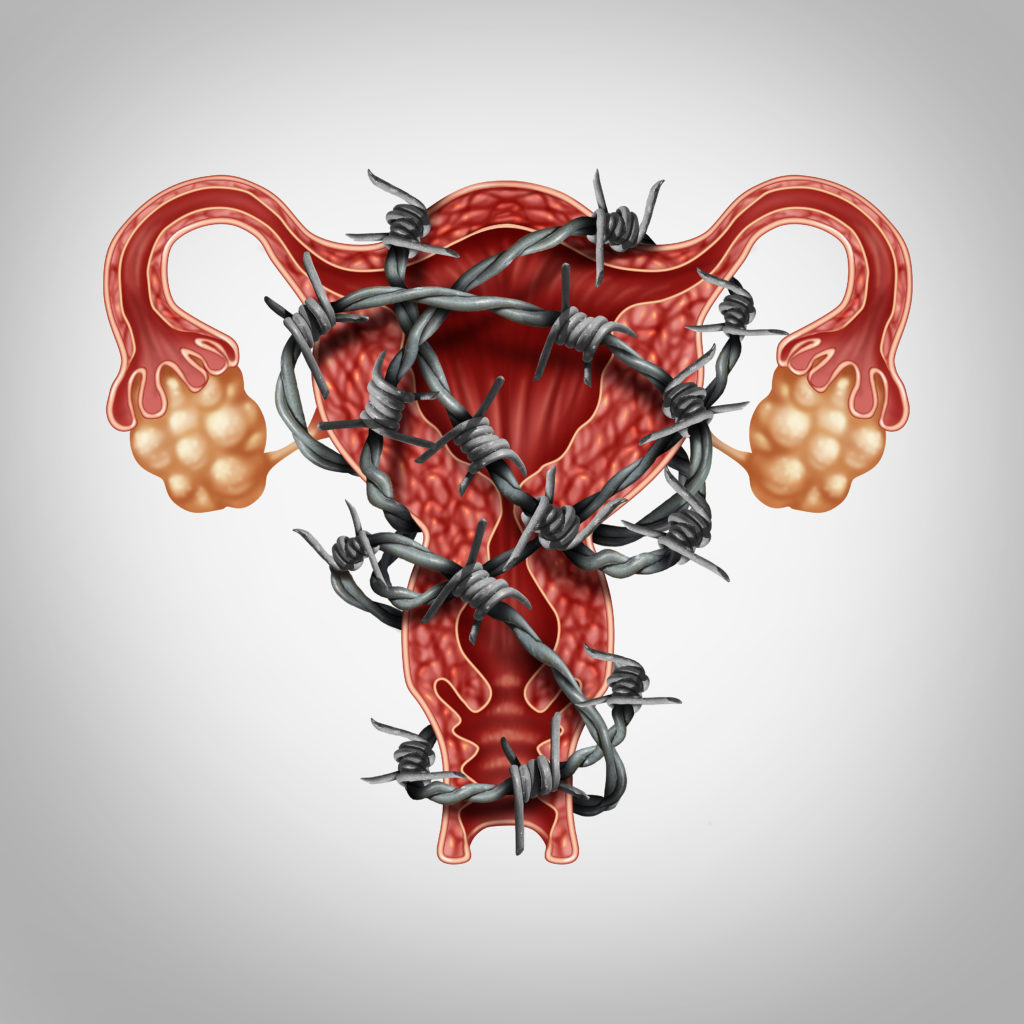What is the Infertility Answer?

Prediabetes At the Root of What Causes Infertility in Women
Before I go into anything else, I need to explain just how incredible damaging the diabetic process is for a healthy pregnancy.
The “diabetic process” includes both prediabetes and diabetes. And prediabetes covers and AWFUL lot of people. In the US, it is estimated that upwards of half the population is prediabetic.
Anyone with cholesterol or triglyceride issues, blood pressure, abdominal obesity, elevated liver enzymes or hearing loss is likely on the list.
Since we are talking about pregnancy here, Polycystic Ovary Syndrome (PCOS) is also very strongly linked to prediabetes. So strongly so that it is almost impossible to find research about PCOS and infertility that doesn’t involve prediabetes.
And 70% of infertility can be linked back to PCOS.
Understanding that being on the path to becoming diabetic is just as dangerous as being diabetic, not just for infertility, but for pretty much every chronic disease known to man.
While it is beyond the scope of this writing to describe everything it takes to pull back from the diabetic path, understand that this is absolutely a choice. The choices you make, regardless of your genetics, will determine if you are prediabetic or will become diabetic.
Even if you have not been diagnosed with PCOS, the lifestyle choices that fight off diabetes will still have the effect of increasing the chance of a healthy pregnancy and baby.
What Causes Infertility in Women: Celiac Disease
Ten years ago, I would have taken this time to explain what celiac disease and gluten were. But, in today’s time frames, you’d have to have been living in a cave to not know that gluten-containing grains like wheat can wreak havoc on the health of people whose immune system attacks the proteins in gluten.
Once the immune system is pissed off, a lot of bad things can happen. This means that gluten can be on the list of what causes infertility for you.
In one study, researchers found that women who had been diagnosed with celiac disease had over 3 times the likelihood of having a hard time getting pregnant.
If they did become pregnant, women with celiac disease had more complications during pregnancy.
The answer to this problem is simple; do your best to avoid exposure to gluten containing grains, at least for several months leading up to trying to get pregnant and during the entire pregnancy.
What Causes Infertility in Women: Toxic Exposures

After diet, one of the most important factors in fertility deals with chemical exposures from the environment.
These exposures are everywhere. Some you’re probably aware of, some that are sneaky and hidden.
But rest assured that these exposures will absolutely interfere with both becoming pregnant as well as staying pregnant.
The problem is that this little tidbit is not typically discussed by “fertility specialists” when a couple that is having a problem conceiving schedules a consult for fertility treatment. I can honestly say that I have never had a patient who went through “fertility treatment” and factors that affect fertility were actually discussed.
One would expect a fertility “expert” to dig into the what causes infertility and have this all-important discussion with the couple. Sadly, the couples that I have come across over the years have not had this experience. Instead, some bloodwork is taken, and they are usually given a course of Clomid or Metformin or IVF, spending thousands of dollars. Sometimes it’s successful, sometimes not.
The environmental chemicals that are the most damaging to fertility are those that have hormone-like effects. Top of the list are BPA and phthalates.
BPA is found pretty much everywhere. Top of the list is plastic water bottles. Avoid them like the plague. BPA also used in the lining of most canned foods. Thermal register receipts.
And don’t think that sporting around that BPA-free water bottle is going to save you—instead of Bisphenol A, these companies have replaced it with Bisphenol S and D, equally as dangerous to fertility and a healthy pregnancy. Stick with glass or stainless steel.
Phthalates are vinyl-like compounds that will also interfere with fertility. This family of chemicals is found everywhere, but your most common exposures are likely from food packaging as well as most personal care products and most anything that has a fragrance.
This means candles, dryer sheets, laundry detergent, fake perfumes as well as air and carpet fresheners. Phthalates are also found in the capsules for most pharmaceutical drugs as well as that “new car smell.”
Do your best to avoid artificial fragrances in every way possible. Stick with items scented with essential oils only. If you’ve bought a new car, never drive with the windows up for at least the first 6 months—always air the car out whenever you’re in it.
Besides BPA in the can liners, clear wrapping around pre-packaged food will also lead to phthalates leaking into the food you’re eating. So keep this type of packaging to a minimum by buying fresh foods instead of pre-cut, pre-packaged stuff.
In a later section I’ll point out how much these same chemicals also play a role in miscarriage and birth defects.
In addition to BPA and phthalates, 97% (yes…pretty much all of us) of Americans have a chemical in their bloodstream that makes pregnancy difficult.
PBDEs are chemicals used in flame retardants (furniture, clothing, dog beds, mattresses, etc…).
In one study, researchers tested the levels of certain PBDE’s in the blood of a group of pregnant women and asked them how long it took them to become pregnant.
Overall, the higher the levels in the blood stream of PBDEs, the longer it took for these women to get pregnant. At the high end, those women with the higher levels in their bloodstream took 40-50% longer to get pregnant.
In this particular case, if PBDEs were higher, it means that the developing baby will ALSO be exposed to higher levels.
For now, if you’d like to read more about how environmental toxins affect every aspect of health and how to avoid them, you can read my full article on the topic by clicking here.
What Causes Infertility in Women: Air Quality
Just to make matters worse, it’s not the stuff on the ground you have to worry about when it comes to fertility.
Air quality varies from country to country and from state to state. Living off the grid in the Yellowstone National Park is going to lead to much better air quality than right by the bus station in downtown Chicago.
So how much can poor air quality affect fertility?
That’s exactly the question posed by researchers who looked at 345 women seeking help at a fertility clinic in Boston. They looked at how much traffic-related pollution (in case you’re an air-quality geek, it was nitrogen dioxide (NO2), ozone (O3), fine particulate matter <2.5μm (PM2.5), and black carbon (BC)).
Based on estimates of residential exposure to pollution:
- Higher pollution exposure was linked to higher risks of IVF failure (8% higher for NO2, 6% higher for O3, 28% higher for PM2.5 and 16% for BC).
- More importantly, if air pollution was higher at critical times in the IVF process, the risk of failure spiked as high as 42%.
This is the reason I always recommend using air filters running 24/7 in the larger rooms of your home and bedrooms. You can’t rely on your HVAC unit to clean the air because it’s only running for a small portion of the day.
This won’t necessarily help when you’re out of the house but considering that you spend a good amount of your day in the house and sleeping in the bedroom, it’s going to help.
What Causes Infertility in Women: Vitamin D
Just in case you’re worried that you’ve got some serious lifestyle changes you need to make before you get pregnant, there are some changes that are very simple to make.
I will cover supplements in pregnancy later as they relate to a healthy pregnancy, but there are a few supplements that play a role in what causes infertility.
Vitamin D has enjoyed its share of press and research in the past decade or so, and rightfully so.
Our “slap on SPF-80 to walk to the car” mentality and demonizing of the sun has led to most people being low in vitamin D. As a result, almost everyone is low on vitamin D and can benefit from supplementation.
Personally, I haven’t checked any of my patients’ vitamin D levels in probably a decade because everyone is low, it’s very inexpensive and the safety of supplementation is very high.
Pregnancy is no different.
Don’t count on your prenatal vitamin to have enough in it (they never do). Instead, consider starting at 4,000 iu of vitamin D per day long before you even consider pregnancy.
Why before pregnancy? Because it will increase your likelihood of becoming pregnant.
In one study, researchers looked at a group of 335 women undergoing infertility treatment, they found that vitamin D levels had a strong impact on the couple becoming pregnant. Here’s what they found:
- 20% of the women with low vitamin D got pregnant while a much higher 31% achieved pregnancy with higher vitamin D levels.
- Overall, women with vitamin D levels above 20 ng/mL were 215% more likely to become pregnant.
- Even better, the women who had higher vitamin D levels (30 ng/mL) had the highest chances of becoming pregnant.
These are pretty good odds for just a simple, safe and inexpensive intervention.
Keep in mind that most vitamin D experts (myself included) still consider 30 ng/dl too low and that more optimal levels should be closer to 60-100 ng/dl. Despite this, the women were considered “low” if their vitamin D was below 20 ng/ml.
So how much better would pregnancy rates be if we looked at the highest levels?
A good quality vitamin D supplement is very inexpensive and shouldn’t run you more than $20 for a YEAR’S worth. And consider finding an emulsified form if you don’t have your gallbladder—otherwise your absorption will be too low.
 Sign up for Bogash Life ‘N Balance and instantly receive a free copy of the eBook:
Sign up for Bogash Life ‘N Balance and instantly receive a free copy of the eBook:
Dr Bogash, you are a great researcher. Thanks for these articles.
Thanks! Hope the info was helpful!
Dr. Bogash